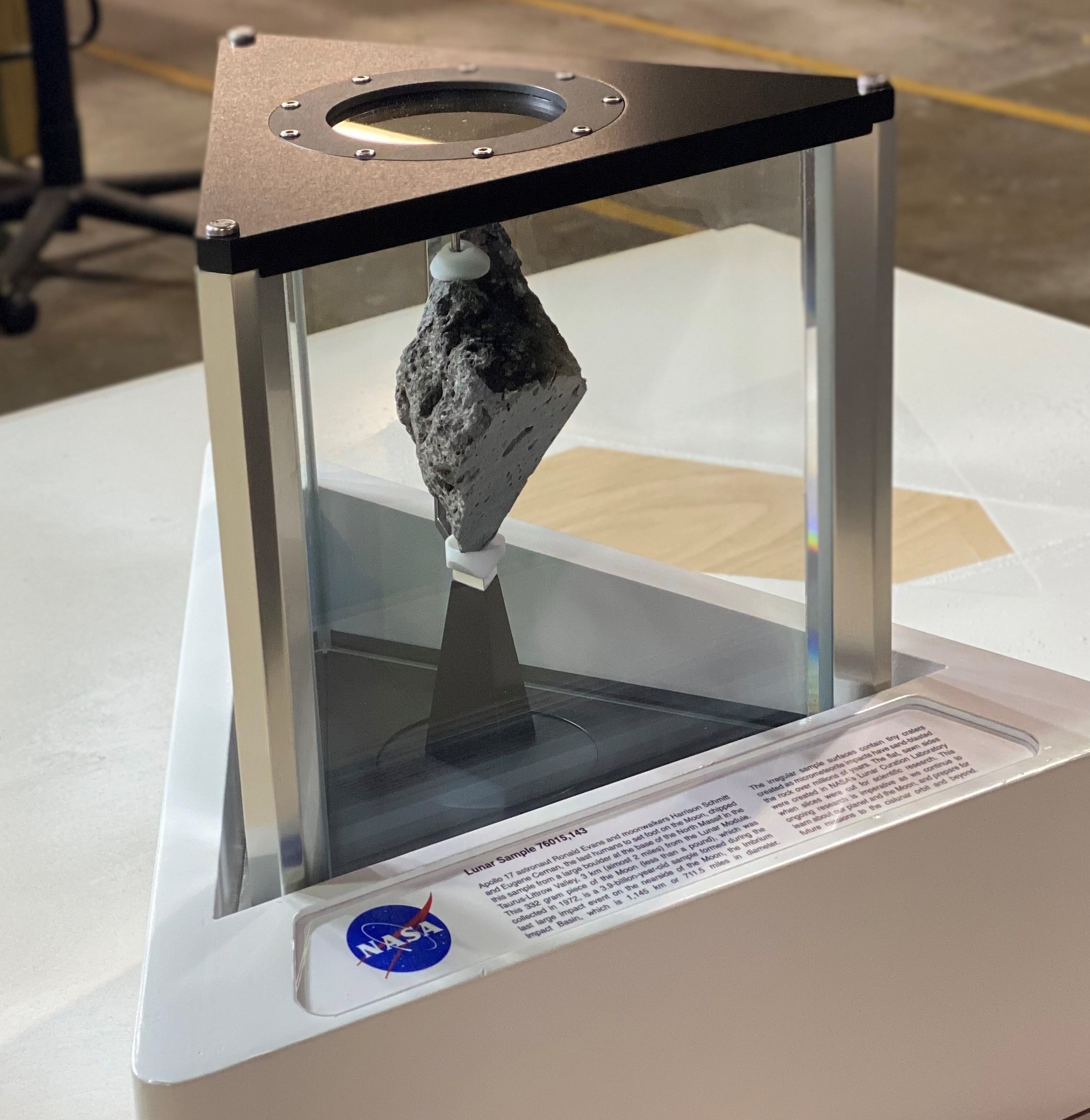
For SpaceUpClose.com & RocketSTEM
CAPE CANAVERAL, FL – At the request of the new incoming Biden White House a 3.9 Billion Year Old NASA Apollo Moon Rock is now on display in the Oval Office as of Inauguration Day Jan. 20, 2021 and confirms the powerful support of President Biden “for America’s current Moon to Mars exploration approach” – namely Project Artemis.
The display is a fitting start to President Biden’s support for NASA and science at the dawn of his four year term in the Oval Office – and serves as a truly heartening signal to space enthusiasts world-wide as the agency seeks to land the first woman and next man on the lunar South Pole as soon as the end of 2024 on the Artemis 3 mission.
The irregularly shaped Moon rock was provided by NASA and collected during the Apollo 17 moon landing mission in Dec. 1972 – the sixth and last time humans set foot upon Earth nearest neighbor nearly 5 decades ago.
“A reminder of our @NASAArtemis pledge to return to the Moon now sits in the Oval Office. Learn more about the lunar sample on loan to the @WhiteHouse: https://go.nasa.gov/2LTUdOv,” NASA tweeted.
ICYMI: A reminder of our @NASAArtemis pledge to return to the Moon now sits in the Oval Office. Learn more about the lunar sample on loan to the @WhiteHouse: https://t.co/4mUhUR46qJ pic.twitter.com/1czY8HyaF9
— NASA (@NASA) January 21, 2021
The 332 gram piece of the Moon (about 3/4ths of a pound) was collected by NASA astronauts Eugene Cernan (Apollo 17 Commander) and Harrison Schmitt (Apollo 17 lunar module pilot) – the last two humans to set foot on the Moon during the final Apollo human lunar landing mission in Dec. 1972.
“Thank you to @POTUS for putting a @NASA moon rock in the Oval Office – look at what we can do together as a country when we are united. A look inside Biden’s oval office – The Washington Postm,” tweeted Ellan Stofan, Director of National Air and Space Museum, Planetary geologist, STEM advocate, former Chief Scientist of NASA.
https://twitter.com/EllenStofan/status/1352024637501284354
Cernan and Schmidt “chipped this sample from a large boulder at the base of the North Massif in the Taurus-Littrow Valley, 3 km (almost 2 miles) from the Lunar Module.”
The 3.9-billion-year-old lunar surface sample formed during the last large impact event on the nearside of the Moon at the Imbrium Impact Basin which is 1,145 km or 711.5 miles in diameter.
NASA says the sample is from the Apollo moon rock collection maintained and preserved at the Lunar Sample Laboratory Facility at NASA’s Johnson Space Center in Houston.
See the complete display case inscription below.
The Apollo 17 sample is pitted with tiny craters created by micrometeorite impacts over millions of years.
“The flat, sawn sides were created in NASA’s Lunar Curation Laboratory when slices were cut for scientific research.”
NASA says the sample is from the Apollo moon rock collection maintained and preserved at the Lunar Sample Laboratory Facility at NASA’s Johnson Space Center in Houston.
See the complete display case inscription below.
The Apollo 17 sample is pitted with tiny craters created by micrometeorite impacts over millions of years.
“The flat, sawn sides were created in NASA’s Lunar Curation Laboratory when slices were cut for scientific research.”
The Apollo 17 crew was comprised of Captain Eugene Andrew “Gene” Cernan, (USN), commander; Commander Ronald Ellwin Evans (USN), command module pilot; and Harrison Hagan “Jack” Schmitt, Ph.D., lunar module pilot.
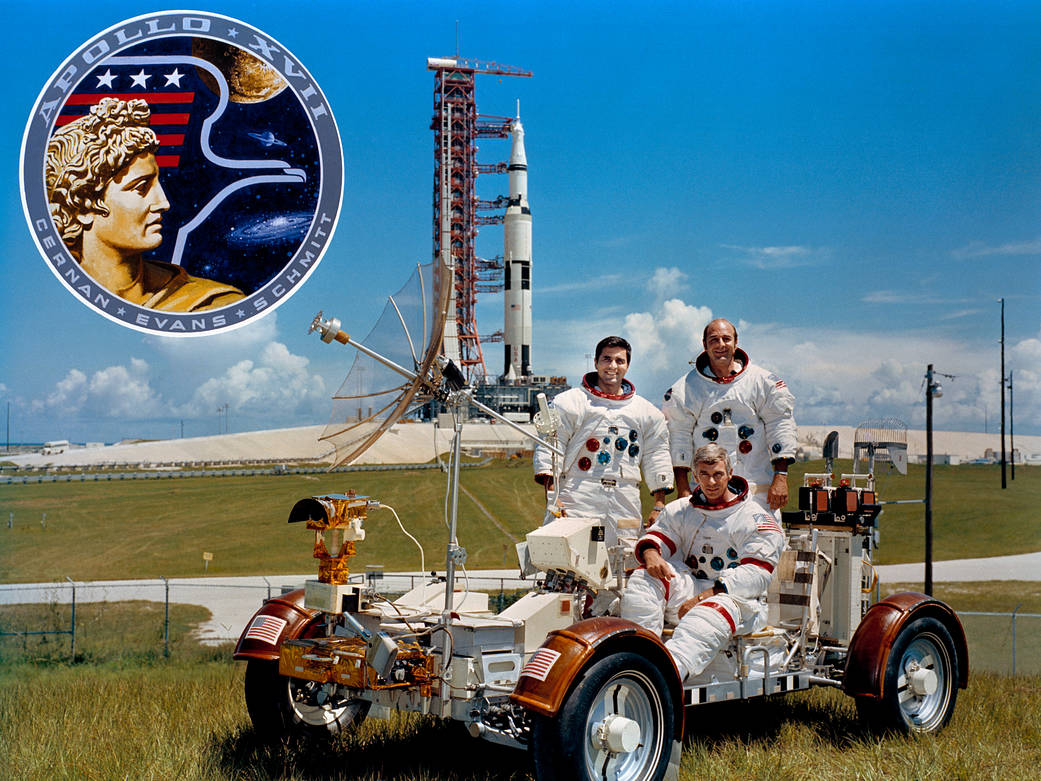
The 12 fay Apollo 17 mission launched on Dec. 7, landed on the Moon inside the lunar module (LM) at Taurus-Littrow on Dec 11 and landed back on Earth on Dec. 19, 1972.
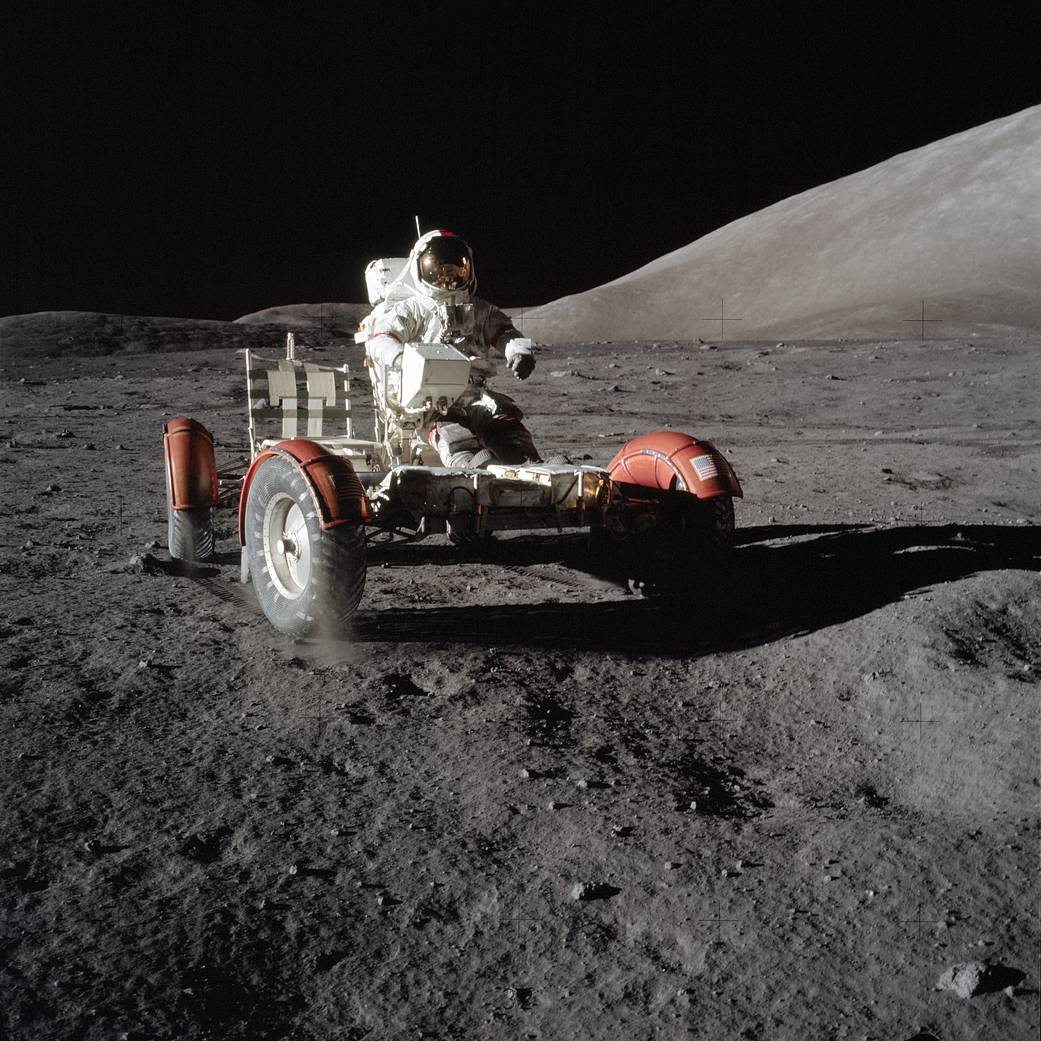
Cernan and Schmidt spent 3 days or 74 hours on the Moon from Dec. 11 to 14, 1972.
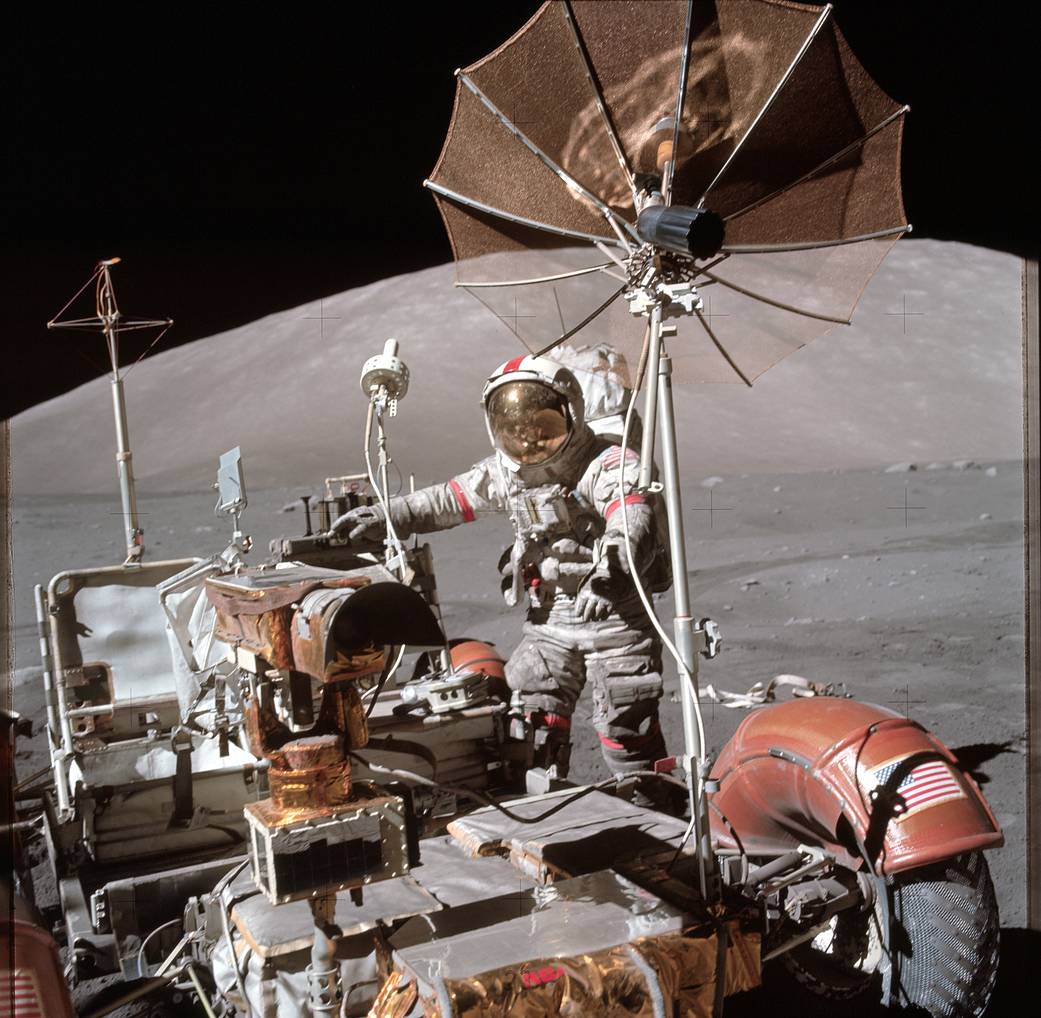
During three EVA’s they spent a total time spent outside the LM of 22 hours 3 minutes 57 seconds, the total distance traveled in the lunar rover vehicle was 19.3 n mi (35.7 km), vehicle drive time was 4 hours 29 minutes, and the collected samples totaled 243.65 pounds (110.52 kg).
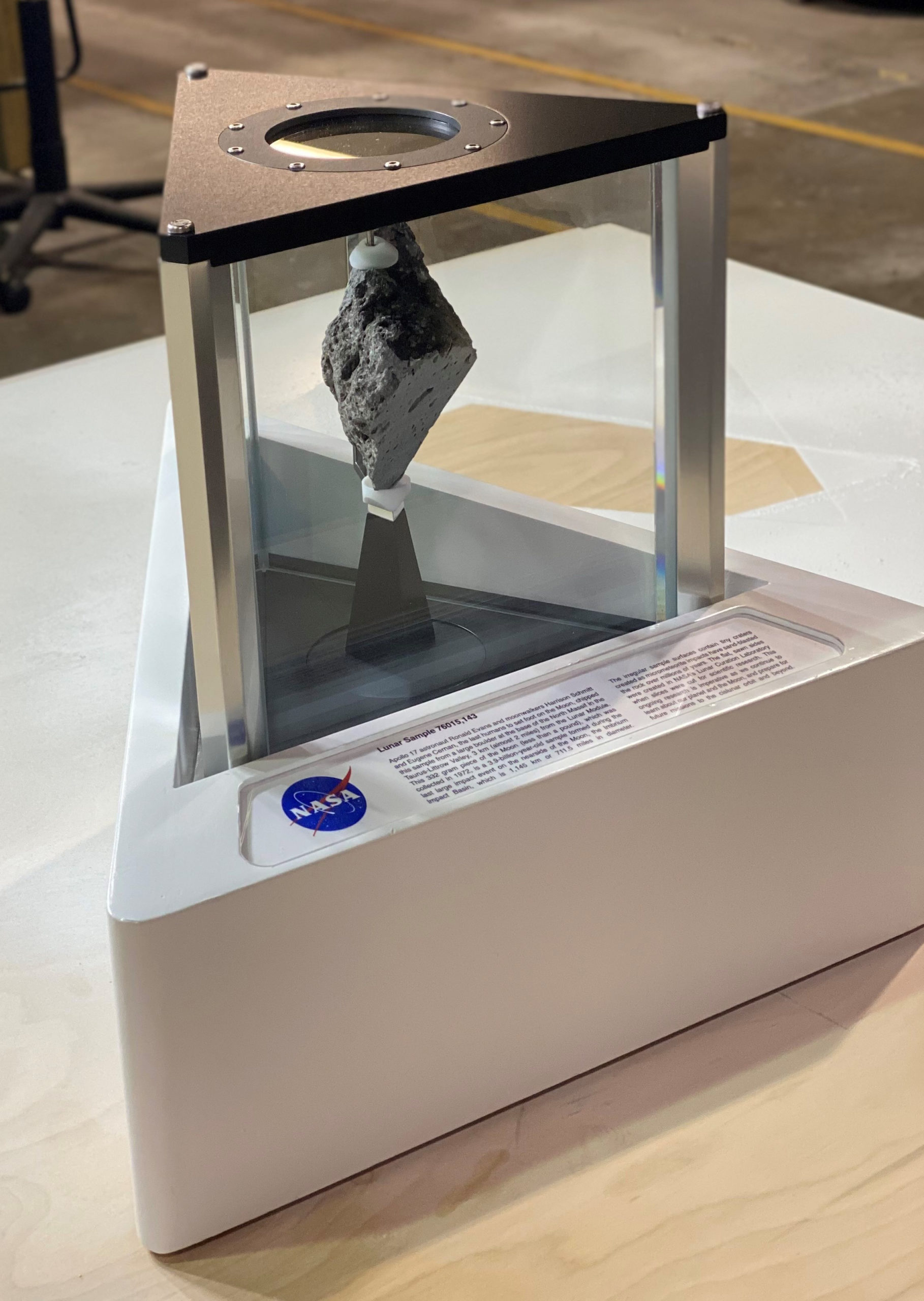
Read NASA’s Inscription for the Apollo Moon Rock Display in the Oval Office
Lunar Sample 76015,143
Apollo 17 astronaut Ronald Evans and moonwalkers Harrison Schmitt and Eugene Cernan, the last humans to set foot on the Moon, chipped this sample from a large boulder at the base of the North Massif in the Taurus-Littrow Valley, 3 km (almost 2 miles) from the Lunar Module. This 332 gram piece of the Moon (less than a pound), which was collected in 1972, is a 3.9-billion-year-old sample formed during the last large impact event on the nearside of the Moon, the Imbrium Impact Basin, which is 1,145 km or 711.5 miles in diameter.
The irregular sample surfaces contain tiny craters created as micrometeorite impacts have sand-blasted the rock over millions of years. The flat, sawn sides were created in NASA’s Lunar Curation Laboratory when slices were cut for scientific research. This ongoing research is imperative as we continue to learn
Meanwhile NASA continues full speed ahead with Project Artemis and development and construction of the SLS Moon rocket and Orion deep space Crew Module.
The second Green Run test of the SLS core stage for Artemis 1 is scheduled for late February.
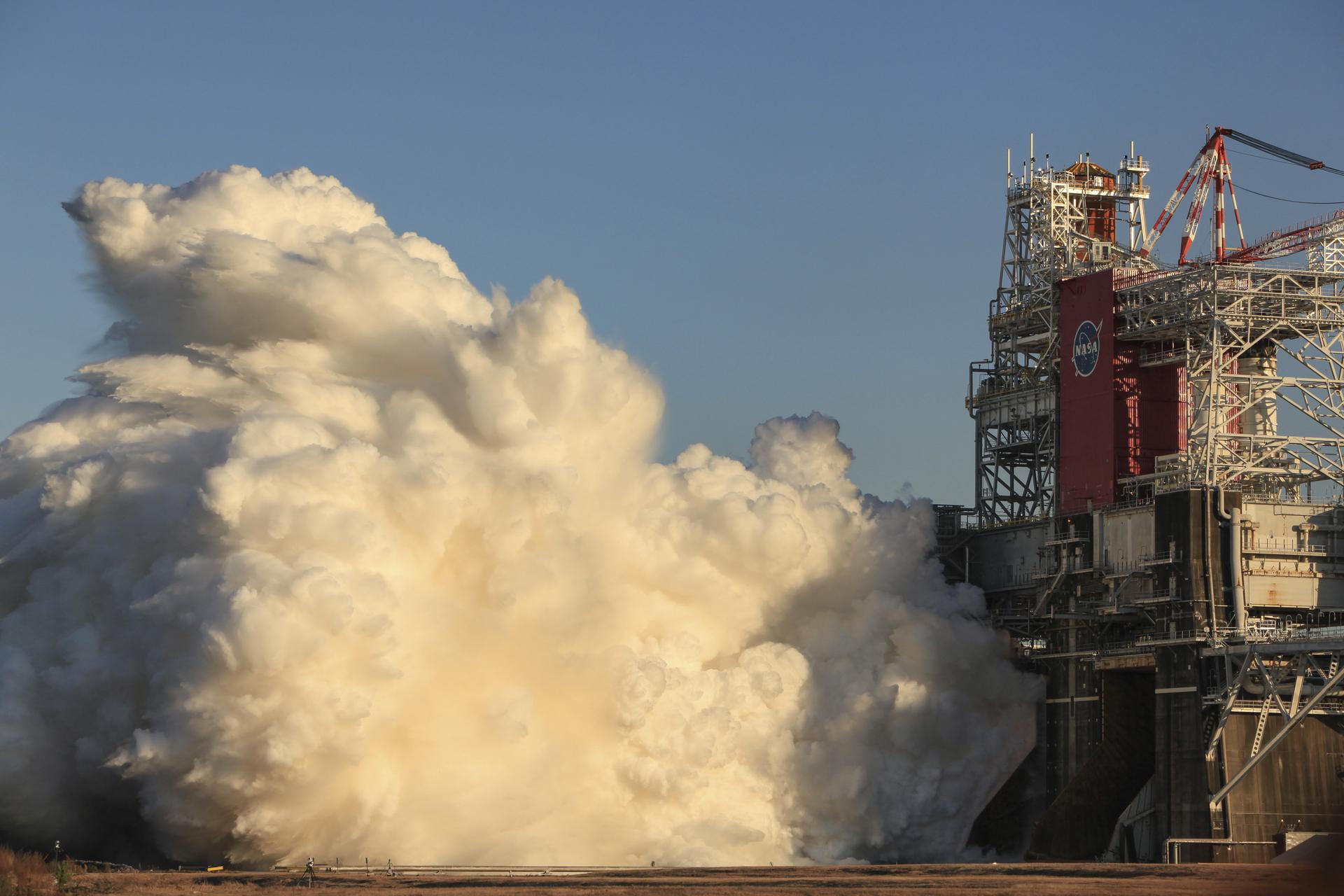
Assembly of the Orion Crew Module for Artemis 1 is complete and it rolled out for propellent loading in Jan 2021 at the Kennedy Space Center (KSC).
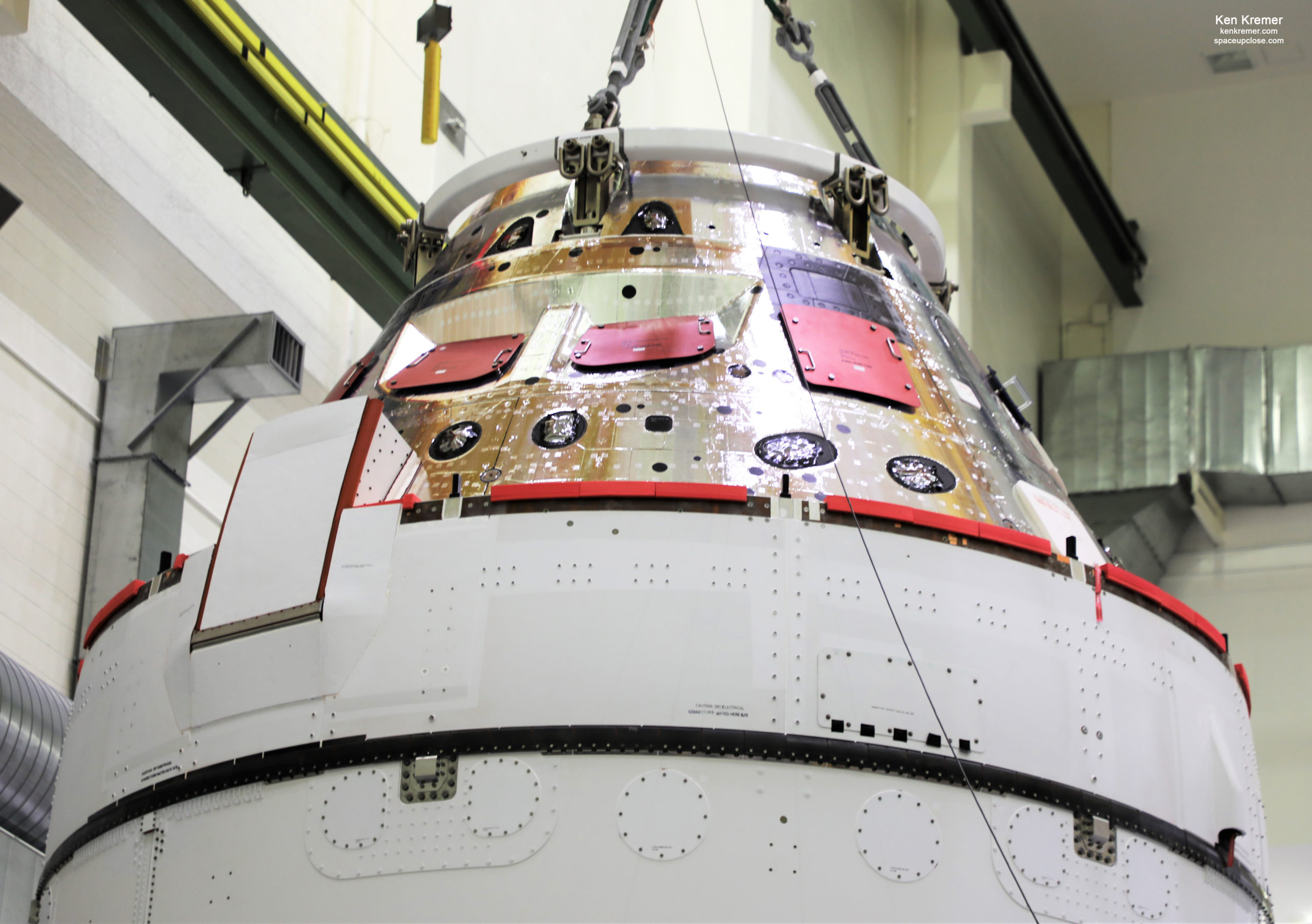
The SLS SRB boosters for Artemis 1 are currently being stacked inside the VAB at KSC.
Watch Ken’s continuing reports about Artemis and NASA missions, SpaceX, Starlink, Commercial Crew and Starliner and Crew Dragon and onsite for live reporting of upcoming and recent SpaceX and ULA launches including Crew 1 & 2, Demo-2, ISS, X-37B, Solar Orbiter, Mars 2020 Perseverance and Curiosity rovers, NRO spysats and national security missions and more at the Kennedy Space Center and Cape Canaveral Space Force Station.
Stay tuned here for Ken’s continuing Earth and Planetary science and human spaceflight news: www.kenkremer.com –www.spaceupclose.com – twitter @ken_kremer – email: ken at kenkremer.com
Dr. Kremer is a research scientist and journalist based in the KSC area, active in outreach and interviewed regularly on TV and radio about space topics.
………….
Ken’s photos are for sale and he is available for lectures and outreach events
Please consider supporting Ken’s work by donating at Patreon:



